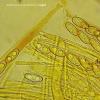
28-08-2025 17:24
Thomas FlammerI know, that this is not the real topic of this fo

29-08-2025 05:16
 Francois Guay
Francois Guay
I think I may have found the teleomorph of Dendros

27-08-2025 12:02
Pavol PaloHello dear friendsI would like to ask for sharing

25-08-2025 17:37
 François Freléchoux
François Freléchoux
Bonjour,Nous avons trouvé samedi dernier à l'ét

20-08-2025 19:04
Ethan CrensonHello, This asco was found on the same wood as my

22-08-2025 08:41
Masanori KutsunaHello.Can anyone help me to get this article?Liu H
Question anthracobia
Patrice TANCHAUD,
02-04-2007 01:16
Si on prend "Nordic Macromycètes" (tome 1 sur les ascomycètes), on peut lire que seule anthracobia macrocystis a des paraphyses qui verdissent dans le Melzer ; ce qui facilite bien entendu la séparation avec A. melaloma.
Par contre, lorsque je lis "Funghi e cenosi di arce bruciate", il est indiqué que les trois anthracobia (macrocystis, melaloma et maurilabra) ont des paraphyses verdissant dans le Melzer.
Cette contradiction est surprenante, est-ce que quelqu'un aurait l'explication ?
Merci
Patrice
Andreas Gminder,
02-04-2007 08:04

Re:Question anthracobia
Bonjour,
je n'ais pas d'experiènce personelle, mais je doute que une seul espèce de cet genre montre cet réaction et les autres ne le montrent pas.
Cet réaction est un réaction des carotenoides avec iode et des carotenoides sont prèsent dans toutes (?) cets genres des Humariaceae (je ne sais pas si cets nom est correct ...).
Amicalement,
Andreas
je n'ais pas d'experiènce personelle, mais je doute que une seul espèce de cet genre montre cet réaction et les autres ne le montrent pas.
Cet réaction est un réaction des carotenoides avec iode et des carotenoides sont prèsent dans toutes (?) cets genres des Humariaceae (je ne sais pas si cets nom est correct ...).
Amicalement,
Andreas
Javier Ormad,
03-04-2007 19:59
Re:Question anthracobia
Comme bien t'a commenté Andreas, l'échange à une coloration verdâtre des parafisis après un contact avec iode est une réaction des carotenoides, tout de suite cela ne peut pas être une caractéristique distinctive d'A. macrocystis. Dans mon expérience, aussi A. melaloma.
Une autre chose serait les doutes qui m'engendrent les actuelles espèces du genre Anthracobia.
Des saluts
Une autre chose serait les doutes qui m'engendrent les actuelles espèces du genre Anthracobia.
Des saluts
Mirek Gryc,
08-07-2020 12:57
Re : Question anthracobia
Hi
The discussion is quite archival but I decided to refresh it :)
Recently I found several Anthracobia collections and because I didn't remember if I had previously checked the reaction of the paraphyses content to iodine, I tested both collections this time. I used Lugol for the test.
Anthracobia tristis had a beautiful reaction, staining the contents of paraphyses green.
You can watch it on my website (photo number 15)
http://grzyby-pk.pl/gat_a/gat_anthracobia_tristis.php
I did the same with Anthracobia melaloma. In her case, however, I did not observe any reaction (photo below).
Other photos of this collection can be viewed on the website;
http://grzyby-pk.pl/gat_a/gat_anthracobia_melaloma.php
The discussion is quite archival but I decided to refresh it :)
Recently I found several Anthracobia collections and because I didn't remember if I had previously checked the reaction of the paraphyses content to iodine, I tested both collections this time. I used Lugol for the test.
Anthracobia tristis had a beautiful reaction, staining the contents of paraphyses green.
You can watch it on my website (photo number 15)
http://grzyby-pk.pl/gat_a/gat_anthracobia_tristis.php
I did the same with Anthracobia melaloma. In her case, however, I did not observe any reaction (photo below).
Other photos of this collection can be viewed on the website;
http://grzyby-pk.pl/gat_a/gat_anthracobia_melaloma.php
Are there any new / reliable information about this?
best regards
Mirek

